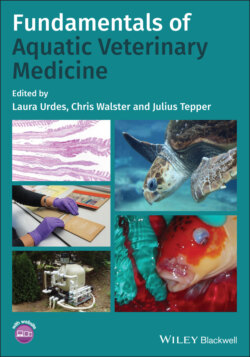Читать книгу Fundamentals of Aquatic Veterinary Medicine - Группа авторов - Страница 37
1.3.2.10 Hardness
ОглавлениеHardness refers to the concentration of divalent cations (calcium, magnesium, and sodium). Water hardness is important to fish culture and is a commonly reported aspect of water quality. It is also expressed as the calcium carbonate equivalent concentration. The same carbonate rocks responsible for most of the alkalinity are the main sources of calcium and magnesium cations for hardness. Hardness may be an index of potential pond productivity. The minimum hardness for fish is 20 ppm and optimum hardness is around 100 ppm.
Hardness is traditionally measured by chemical titration. The hardness of a water sample is reported in milligrams per liter as calcium carbonate (mg/l CaCO3). Calcium carbonate hardness is a general term which indicates the total quantity of divalent salts present and does not specifically identify whether calcium, magnesium and/or some other divalent salt is causing water hardness. If limestone is responsible for both hardness and alkalinity, the concentrations will be similar, if not identical. However, where sodium bicarbonate (NaHCO3) is responsible for alkalinity, it is possible to have low hardness and high alkalinity.
